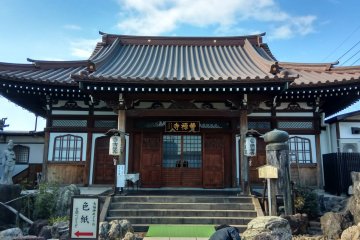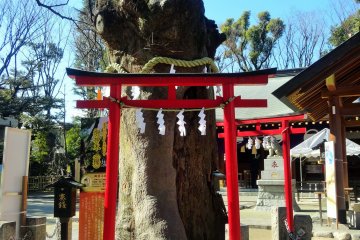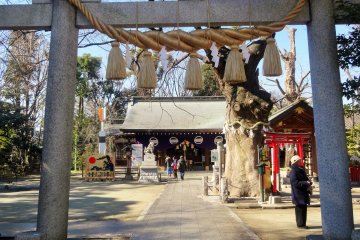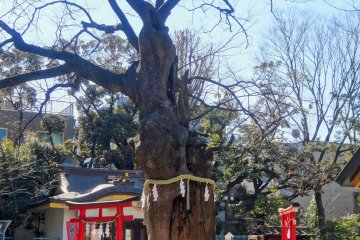The quiet grounds of Nitta-jinja Shrine belie a long and colorful history. The shrine dates back over 650 years to the Namboku Period (which spanned much of the 14th century), when factions from the northern and southern halves of Japan were engaged in constant conflict.
One of the warriors, a samurai named Nitta Yoshioki, was considered to be one of the South’s most accomplished fighters and strategists. He met his end at the Yaguchi Ferry crossing in current day Ota Ward, when his enemies drilled holes in the bottom of his boat and shot arrows at the floundering warrior from the banks. His death allegedly brought a curse upon all involved, resulting in a series of lightning strikes and fires to the nearby area. Local villagers, seeking to appease the vengeful spirit, constructed the Nitta-jinja Shrine on the site of the samurai’s death.
Today, the shrine is well-known as a place of luck, and also for its 700-year-old zelkova tree that towers over the grounds. The tree has survived numerous fires, as well as the Tokyo air raids of 1945 that gutted the rest of the shrine buildings. It is believed that those who touch the tree will receive good luck in health and longevity.
Behind the shrine stands an unassuming grove of bamboo. In the Edo Period, Hiragi Gennai – who was also known as the inventor of the electrostatic generator – took pieces of the bamboo to create the first hamaya, or sacred arrow offered at shrines in Japan. A modern sculpture depicting an arrow, designed by famed Japanese graphic artist Asaha Katsumi, stands next to the main hall to commemorate this event.












